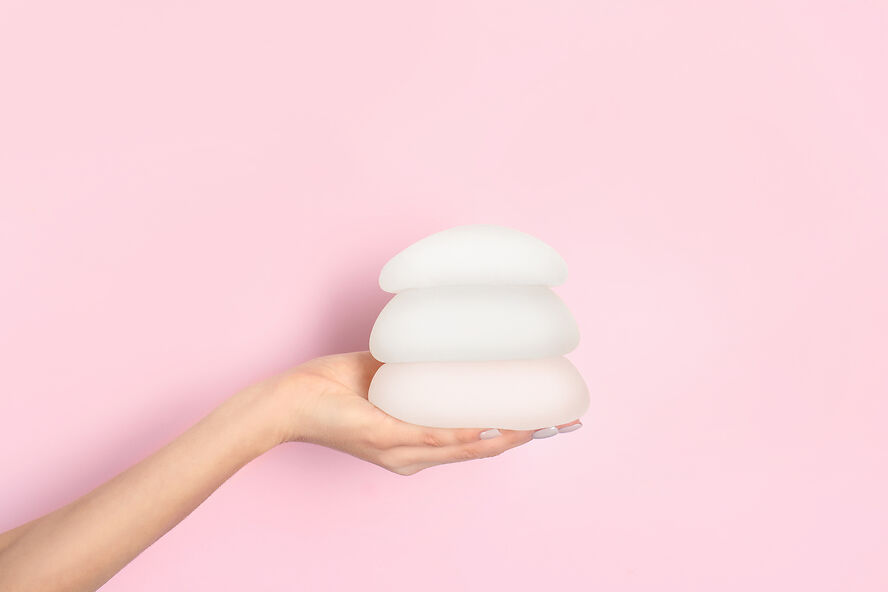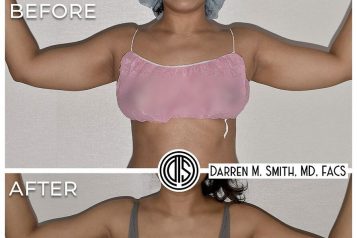Embarking on the journey of breast augmentation involves thoughtful consideration of various factors, from the types and distinctions of implants to the intricate choices of size, shape, and profile. Haute Beauty Expert Dr. Nilay Shah delves into the nuanced world of breast implants, presenting a comprehensive guide for those navigating the realm of aesthetic enhancement.
 Photo Credit: Courtesy of Shutterstock
Photo Credit: Courtesy of Shutterstock
Exploring the Types and Distinctions of Breast Implants
Breast implants come in three main types each with unique features:
1. Saline Implants
– Filled with sterile saltwater.
– Firmer feel, more risk of rippling.
– Safer in case of leaks, as the body absorbs saline.
– Smaller incisions are needed for insertion.
2. Silicone Gel Implants
– Filled with silicone gel, offering a more natural breast tissue feel.
– If ruptured, the gel may stay in place or leak into the breast pocket.
– Require slightly larger incisions.
3. Highly Cohesive Silicone Gel Implants (Gummy Bear Implants)
– Thicker, more cohesive silicone gel, maintaining shape even when cut.
– Most natural feel, lower risk of rippling.
– Minimal risk of gel leakage.
– May need longer incisions due to firmness.
Implants also vary in shape (round or teardrop), texture (smooth or textured), size, and profile. The choice depends on personal preferences, body type, and desired outcomes, and should be discussed with a board-certified plastic surgeon for tailored recommendations.
Tips for Determining the Ideal Size of Breast Implants for a Natural Appearance
1. Assessing Body Frame: Considering the patient’s body size, chest width, and existing breast tissue.
2. Understanding Goals: Discussing the patient’s desired appearance and expectations.
3. Expert Evaluation: The surgeon evaluates skin elasticity and breast anatomy.
4. Implant Options: Choosing between types and shapes of implants that suit the patient’s body and goals.
5. Visualization Aids: Using 3D imaging or sizers for a realistic preview.
6. Lifestyle Factors: Considering the patient’s lifestyle and physical activities.
7. Balancing Desires with Realism: Ensuring expectations align with what can be safely and realistically achieved.
8. Surgeon’s Guidance: Relying on the surgeon’s expertise to recommend appropriate sizes.
A successful outcome relies on a balance between the patient’s desires and the surgeon’s assessment of what will look natural and be physically suitable.
Choosing the Right Implant Shape: Tailoring Aesthetic Goals to Body Types
Specific implant shapes are better suited for certain body types and aesthetic goals:
1. Round Implants
– Best for those seeking more fullness in the upper part of the breasts, creating a more pronounced profile.
– Body Type Suitability: Works well with most body types, particularly if a more rounded appearance is desired.
2. Teardrop (Anatomical) Implants
– Best for creating a more natural slope, with more fullness at the bottom, resembling the natural breast shape.
– Body Type Suitability: Ideal for slender patients with less natural breast tissue, or those seeking a more natural-looking enhancement.
The choice depends on the patient’s existing anatomy, personal preferences, and the look they wish to achieve. A consultation with a plastic surgeon is essential to determine the most suitable option.
Common Myths and Misconceptions About Breast Implants
1. Implants Prevent Breastfeeding: Many women with implants can breastfeed successfully.
2. Implants Last a Lifetime: Implants may need replacement or revision over time, typically after 10-15 years.
3. Implants Always Look Unnatural: Modern implants and surgical techniques can achieve very natural-looking results.
4. Bigger is Better: Extremely large implants can look unnatural and cause physical discomfort; proportionality is key.
5. Implants Increase Breast Cancer Risk: Research shows no link between breast implants and an increased risk of breast cancer.
6. Implant Rupture is Dangerous: Modern implant materials, like cohesive silicone, remain in place even if a rupture occurs, posing less risk.
7. Only for Younger Women: Women of various ages can be good candidates for implants, depending on their health and goals.
8. Implants Are Only Cosmetic: Implants are also used for reconstructive purposes, like post-mastectomy breast reconstruction.
For more information, visit Dr. Brian A. Levine's social media:

























